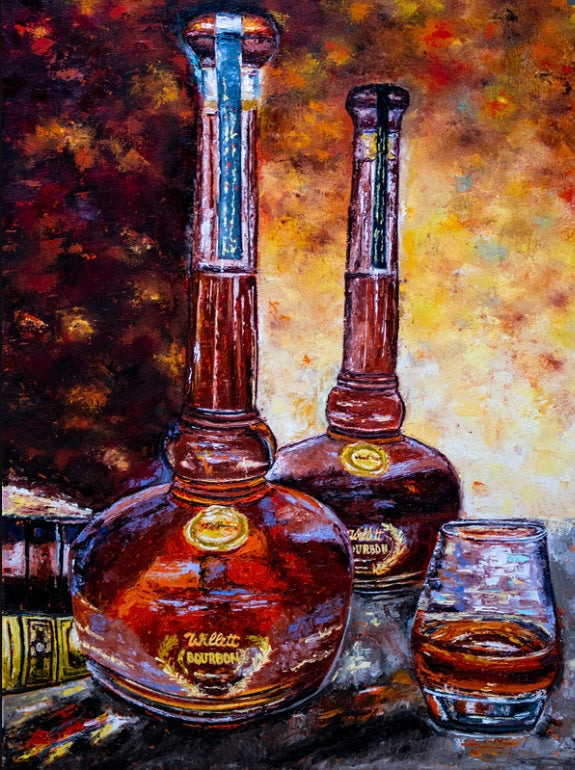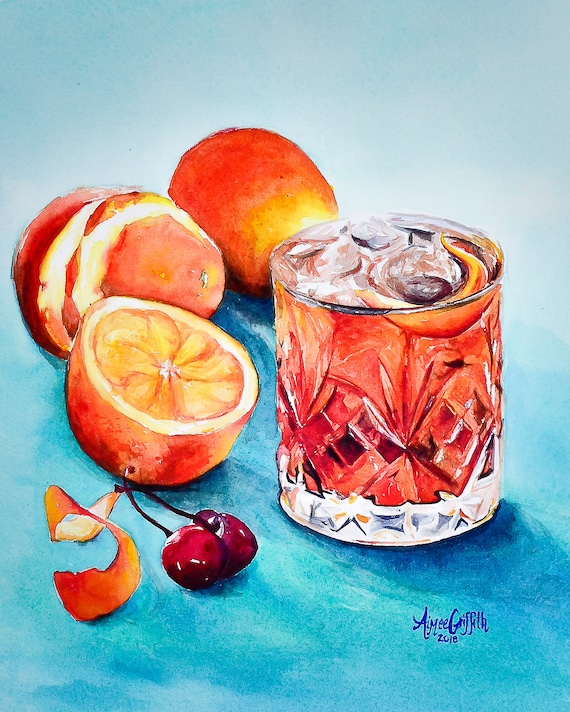Unveiling the Appeal of Bourbon Art: A Tribute to Craft Distillers
Unveiling the Appeal of Bourbon Art: A Tribute to Craft Distillers
Blog Article
The Significance of Whiskey Art in Celebrating Heritage and Craftsmanship in the Beverage Sector
The complex connection between bourbon art and the event of heritage and workmanship within the beverage industry can not be overemphasized. Via thoughtfully developed tags and bottles, bourbon brands encapsulate their historical roots and the artisanal skills that specify their manufacturing techniques.
The Historic Origins of Whiskey
At the heart of bourbon's appeal lies an abundant tapestry of historic origins that trace back to ancient human beings. The origins of scotch can be connected to the purification practices of the Sumerians and Babylonians around 2000 BCE, where very early forms of fermented grain beverages began to emerge. Nonetheless, it was in the Middle Ages that the art of distillation advanced dramatically, particularly in Ireland and Scotland, leading to the creation of bourbon as we understand it today.
The term "whiskey" itself obtains from the Gaelic word "uisce beatha," suggesting "water of life." This phrase underscores the cultural relevance of whiskey in Celtic societies, where it was often connected with routines, parties, and common bonding. By the 15th century, purification came to be an acknowledged craft within monastic communities, paving the method for the establishment of lawful distilleries.
As trade paths increased, bourbon's appeal expanded, going beyond regional borders and capturing the interest of lovers worldwide. Bourbon Art. This historical journey mirrors not just the craftsmanship behind whiskey production yet likewise its important role in social and social contexts, noting it as a considerable drink throughout background
Artistic Expression in Branding
Scotch branding stands as a compelling intersection of artistry and business, where aesthetic identification plays a vital function in forming customer understanding. The visual appeals of whiskey tags, product packaging, and advertising and marketing products show not just the brand's tale yet likewise its core values and heritage. Through creative expression, distilleries share a narrative that resonates with consumers, evoking feelings and sparking connections.
Using shade, typography, and imagery in branding offers to set apart products in a saturated market. For instance, standard motifs may evoke a sense of authenticity and workmanship, while contemporary layouts can symbolize innovation and forward-thinking. This strategic imaginative instructions boosts brand name acknowledgment and loyalty, enabling customers to create a personal connection with the bourbon they pick.
In addition, imaginative expression in branding usually works as an event of local heritage. Distilleries often integrate local signs or historical recommendations right into their layouts, producing a local color that welcomes consumers to participate in a more comprehensive social experience. Eventually, the virtuosity behind whiskey branding not just enhances visual charm yet also improves the total story of the brand name, fostering a deeper gratitude for the workmanship and heritage embedded in each container.
Workmanship in Bottle Design
The artistry obvious in scotch branding extends past visual identification to include the craftsmanship entailed in bottle style. Each bottle serves as a vessel not just for the spirit within, but additionally for the tale it tells regarding its quality, tradition, and beginning. The layout procedure needs precise attention to detail, as components such as product, form, and closure contribute significantly to the total understanding of the whiskey.
Workmanship in container design entails selecting premium glass that can boost the bourbon's shade and quality, while additionally giving a tactile experience for the customer. The shape of the bottle must be both functional and aesthetically appealing, usually showing the heritage of the brand name. Several distilleries choose unique shapes or printed logos that evoke a feeling of authenticity and history.
Moreover, the tag layout and typography play an essential role in connecting the brand name's narrative. Limited Edition. A well-crafted container not just captivates the customer's eye but likewise enhances the brand's dedication to high quality and custom. In this way, the workmanship of bottle design comes to be an essential aspect of the whiskey experience, merging artistry with an extensive regard for heritage
Cultural Significance of Scotch Art
Commemorating custom and craftsmanship, the cultural relevance of whiskey art transcends simple appearances, intertwining with the historic and social narratives of the regions from which it originates. Each bottle functions as a canvas, portraying the distinct tales, folklore, and traditions that have shaped local whiskey-making techniques. The complex layouts commonly mirror the heritage of the distillers, including signs and concepts that reverberate with the culture and values of their neighborhoods.

In addition, bourbon art plays a vital duty in public celebrations and celebrations, acting as a substantial link between individuals and their shared experiences. By appreciating the artistry in scotch packaging, Clicking Here consumers cultivate a much deeper understanding and regard for the craft, ultimately enriching their pleasure of the drink itself.
Modern Trends in Whiskey Discussion
In recent times, the presentation of bourbon has actually evolved to mirror contemporary preferences and trends while still honoring traditional craftsmanship - Bourbon Art. Distilleries are significantly concentrating on aesthetic components that enhance the overall drinking experience, connecting the space in between heritage and modernity
Ingenious bottle styles have actually emerged, often incorporating sustainable products and imaginative tags that inform engaging tales. Many brand names currently collaborate with local artists, instilling their products with special visual expressions that resonate with customers. In addition, limited-edition releases are usually packaged in collectible containers, adding worth and charm for lovers.

Conclusion
In final thought, bourbon art serves as a vital conduit for revealing the heritage and craftsmanship inherent in the drink sector. With detailed branding, cutting-edge container layouts, and culturally significant artistic elements, whiskey brands effectively honor review their customs and link with customers.


Craftsmanship in container design entails choosing top quality glass that can enhance the bourbon's color and clarity, while likewise providing a responsive experience for the customer. In this way, the workmanship of bottle design ends up being a vital aspect of the bourbon experience, merging creativity with an extensive regard for heritage.
In final thought, scotch art serves as a crucial conduit for revealing the heritage and craftsmanship intrinsic in the drink market.
Report this page